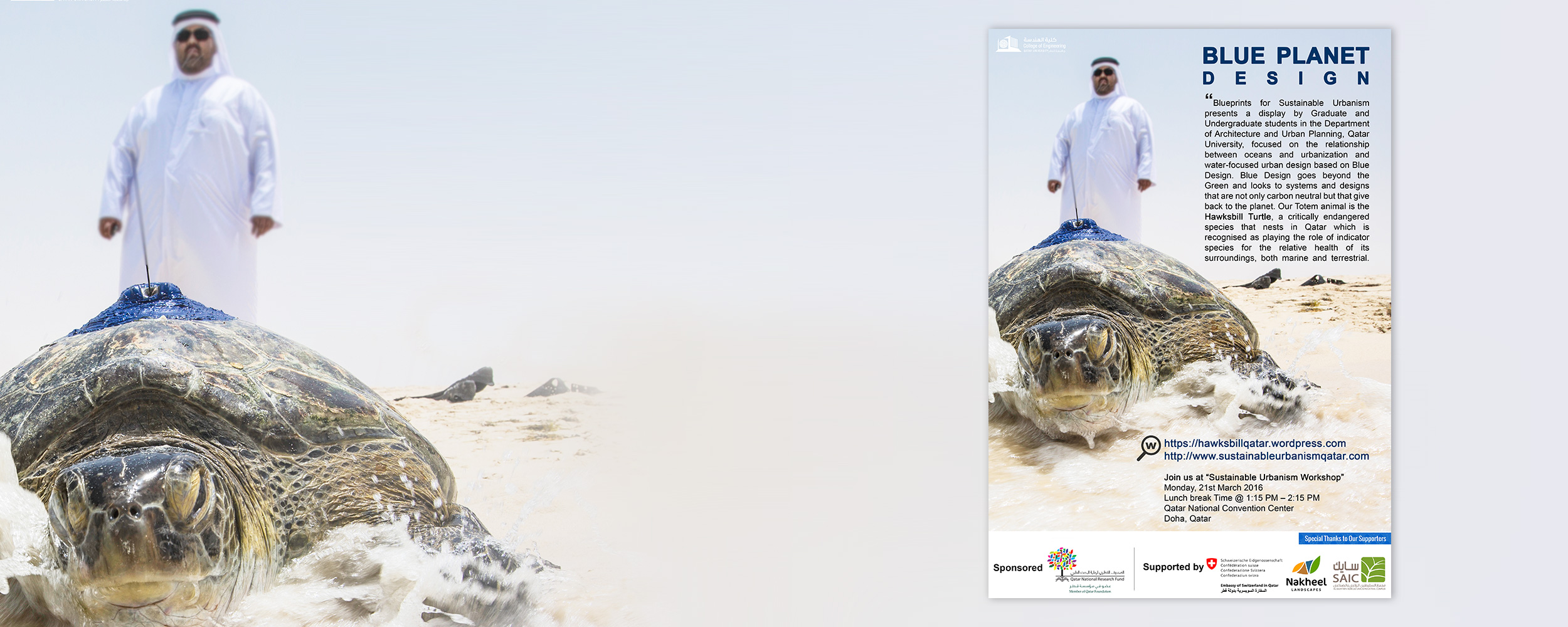 3
Issue 3
3
Issue 3

Blue Planet Design: Blueprints for Sustainable Urbanism
Blue Planet Design: Blueprints for Sustainable Urbanism
Blueprints for Sustainable Urbanism, a display by Graduate and Undergraduate students in the Department of Architecture and Urban Planning, Qatar University, focused on the relationship between oceans and urbanization and water-focused urban design adhering to Blue Design principles.
The aim of the Sustainable Urbanism – New Directions Workshop was to discuss the role of the social sciences in sustainable urbanism, and to attempt to identify future paths for research to a more socially just, ecologically healthy and economically balanced planet. Education and awareness make important contributions to these objectives, and it was important to engage students in both the workshop and discussions.
What are Blue Design principles? They go beyond those of Green Design and look to systems and designs that are not only carbon neutral but that give back to the planet. This is an approach also rooted in the concept of Blue Urbanism developed by Dr. Timothy Beatley, which takes as a starting point the fact that our human fate here on the blue planet is intimately tied to ocean health and that two-thirds of our global population lies within 400 kilometers of a shoreline. Blue urbanism is the balance between urbanisation on land and its effects on the oceans.
“The World is blue. Everyone, everywhere is inextricably connected to and utterly dependent upon the existence of the sea”.
– oceanographer and National Geographic Explorer Sylvia Earle, in her book The World is Blue, 2010
Our totem animal is the hawksbill turtle, a critically endangered species that nests in Qatar which is recognised as playing the role of indicator species for the relative health of its surroundings, both marine and terrestrial. Marine turtles are some of the oldest surviving reptiles on the planet are irreplaceable ecological resources. Turtle habitats support important populations of commercial fish and invertebrates, seagrass beds, open oceans and coral reefs, among others.
For these reasons, turtles often act as flagship species for conservation programmes, mainly because their conservation demands the protection of vast and diverse marine areas in order to provide for all biological processes of the turtle’s lifecycle. Biodiversity conservation cannot be successful unless local communities receive their fair share of benefits from and assume a greater role in managing local biological resources.
It is believed that whether sea turtles ultimately vanish from the planet or whether they remain a wild and thriving part of the natural world will reflect the ability of humans to sustainably coexist with the diversity of life on Earth.